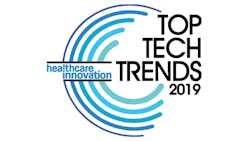For many patients—especially those in the baby boomer and Generation X cohorts—seeking medical care outside a hospital or physician’s office might seem blasphemous. In the traditional healthcare ecosystem, patients wait until they get sick to contact their care providers, then often wait days until they actually get to see said provider, only to then wait in his or her office to finally get face-to-face time. It’s a continuous cycle that has not changed much over time—until now.
Patients are beginning to realize that waiting days and sometimes weeks to make an appointment with a provider—a 2017 Merritt Hawkins report found that it takes an average of 24 days to schedule a new physician appointment in a large U.S. city, a 30 percent increase from 2014 data—is unacceptable and that other options do exist. What’s more, as healthcare costs continue to rise and patient payment responsibility increases, looking outside the traditional four walls for medical care has become more appealing.
“As millennials, Generation X, and baby boomers enter new life stages at the same time, there are simultaneous demands for both lower cost, convenient care delivery and better management of chronic illness and outcomes. The industry must evolve to meet the needs of these groups (and others)—both in terms of where they converge and where they deviate,” KPMG researchers wrote in the research and consulting firm’s “Healthcare 2030” report.
At the same time, while patients are less willing to tolerate the delays and inefficiencies often associated with healthcare, it remains to be seen just how ready they are to truly embrace alternative forms of care. Research shows that telehealth encounters, for example, are on the rise when compared to their near non-existent usage just a few years ago; but while they like having the option of telehealth, most patients still prefer face-to-face visits to virtual ones.
Retail healthcare clinics, on the other hand, are becoming increasingly appealing to consumers as an alternative form of care delivery for certain conditions. A recent survey of 1,000 patients from Kyruus, a healthcare solutions company, found that nearly half of respondents said they sought care in a retail or urgent care clinic. And, 30 percent of those said they visited one of these sites after they were frustrated in their efforts to secure timely appointments with their primary care physicians.
Are providers adapting?
Of course, the other end of the healthcare consumerism spectrum is dependent on providers being able to meet patients’ shifting demands so they can keep them in their networks. But when asked how “consumer-centric” patient care organizations are today, on a 0 to 10 scale, John Matthews, principal, healthcare and life sciences strategy, at KPMG, says, “Broadly speaking, close to 0.” Although hospitals and health systems are creating new job titles internally—such as chief marketing officer, chief innovation officer, and patient experience officer—in reality they tend to be a senior person who gets reallocated from another department, Matthews says.
In other sectors, however, the consumer-centric push looks completely different. Take financial services, for instance—an industry that Matthews believes has entirely transformed itself to become more consumer-focused over the last 15 years. “[Companies] in this sector have tens of thousands of people whose sole focus is figuring out how to better understand their consumers’ needs, how those needs change over time, and how to design products and services to meet those needs,” he says. Matthews also offers the hospitality industry as another example, as it has “gone through a data and analytics revolution” to be able to predict the behaviors of their customers to determine what hotels they might stay at and how those hotels differ across customers’ business and personal needs.
Healthcare, though, is “light-years behind,” Matthews attests, noting the core reason for this is that its problems are much more complex to solve than those of other industries. “In healthcare you are helping people make complicated decisions on what physicians and facilities to go to, and when, and how they [should] behave in ways that lead to better decisions and healthier outcomes for themselves and their families. These [choices] are emotionally charged, fraught, and complex. The level of difficulty in healthcare is way beyond any other industry to get to that level of consumer engagement and influence,” he contends. Matthews adds that he “cannot think of any healthcare organization that is exceptional at being consumer-centric.”
Disruptors forge a path
Due to the changing patient care paradigm, experts see now as good a time as ever for non-traditional entrants to “disrupt” typical healthcare processes. As David Butler, M.D., founder of healthcare consulting firm Calyx Partners, and a former clinical IT executive at Sacramento-based Sutter Health, puts it, “Apple, Amazon, Google and Microsoft have been watching this $3 trillion [healthcare] prize for a long time, but have not touched it because of HIPAA and other over-regulated [barriers] that prevented them from innovating in this space.” He adds, “But then you had deductibles go from $1,000 to $7,000 before the insurance kicks in, so the patient turned into the customer. And these disruptors said to themselves, ‘We know customers, we don’t know patients. So now we will go for it.’”
Apple, of course, knows consumers as well as anybody and has earned their trust as a result. It’s a core reason why it launched its Health Records platform 18 months ago, which is already live at hundreds of hospitals and clinics and allows patients who visit participating providers to access their health data on the iPhone Health app.
Micky Tripathi, the president and CEO of the Massachusetts eHealth Collaborative, has mixed sentiments on if companies like Apple can completely overturn the economics of healthcare. On one hand, he says, “Thinking about what happened to the music industry, you had Apple coming in and essentially saying to the record companies, ‘We know your customers better than you and they like us better than they like you. And then you had iTunes and iPods upending the music industry.”
On the other hand, healthcare is a much different industry than music, with a deep reliance on medical expertise and still a fundamental need for traditional care delivery sites, Tripathi expresses. “The ties people have with providers are intimate, and even though consumers do have more of the costs in their hands, it’s not clear how much different they act, even with high deductibles. They still do follow their providers’ advice,” he acknowledges.
Matthews sees a role for some of these new entrants, but not in the form of ever supplanting traditional healthcare players. “When you consider the complexity of actually organizing physicians and getting them to do something useful, of owning hospitals, and of operating on the kinds of thin margins that health systems operate on, I don’t think that’s a business ultimately these companies want to get into,” he contends.
Interestingly, the form of disruption that experts seem to be most intrigued by is one that’s already taking place in a major way—retailers walking into the provider space and offering on-demand convenience that patients are attracted to. For one, there are now more than 1,100 MinuteClinic locations inside CVS Pharmacy and Target stores across the U.S., according to CVS Health officials. And of course, the company’s recent merger with health insurance giant Aetna introduces a whole new dynamic—a storefront that has the potential to be a one-stop-shop for consumers.
People do have a level of trust in CVS as their local pharmacist where they pick up their prescriptions, notes Tripathi. “So, how about if you take your Apple Health Records with your [pharmacy] information from CVS, and then you upload your Fitbit data into your CVS Health app that can take all of this information with my permission? Right now, the [traditional] provider isn’t willing to do that. CVS [could potentially say], ‘You already trust us, so why not make us your digital home?” Tripathi offers.
At the same time, the types of services that CVS does offer are mostly limited to the treatment of minor conditions, and Matthews ponders just how far the company wants to go with its acute care capabilities. “It seems to me like they are trying to stay primarily in spaces where they feel like they have some natural advantages,” he conveys.
In the end, experts debate on just how much disruption will take place in the short term, while agreeing that traditional stakeholders will at least need to form some partnerships if they want sustained economic success. But as long as new players continue to enter the market and patients demand more efficient and convenient service, the pressure will be on health systems to adapt.
“Wait until Amazon and Cleveland Clinic or Mayo Clinic are [joined] at the hip. It’s happening and it will continue to happen,” says Clipper, who believes that folks who are waiting for large healthcare organizations to make the next move have it backwards. “The new entrants will be the drivers of this and it will become a matter of which [patient care] entities do these gigantic multibillion dollar companies want to work with? The question isn’t about should you or shouldn’t you partner, but rather, “Who’s it going to be?”




